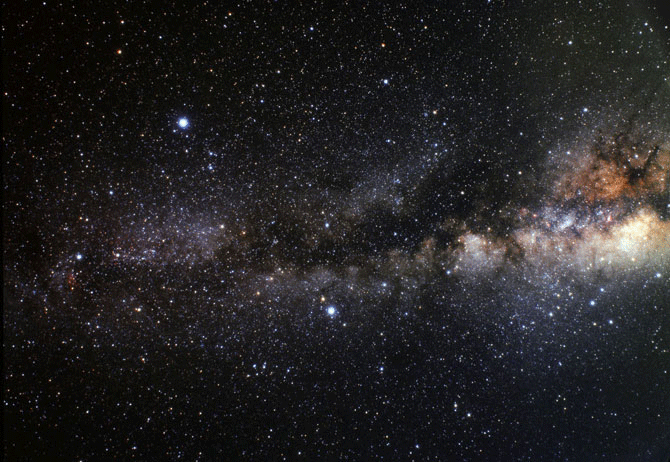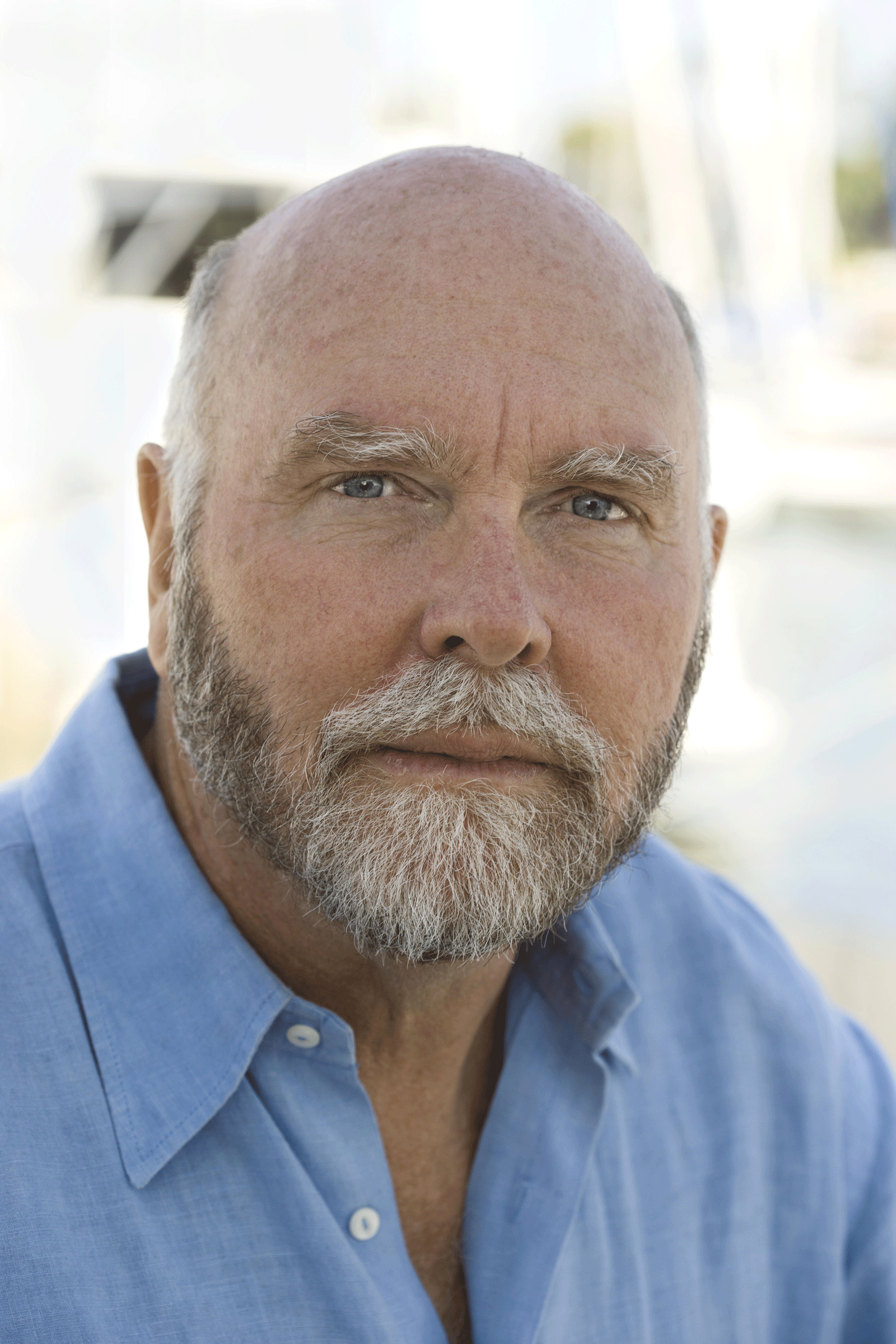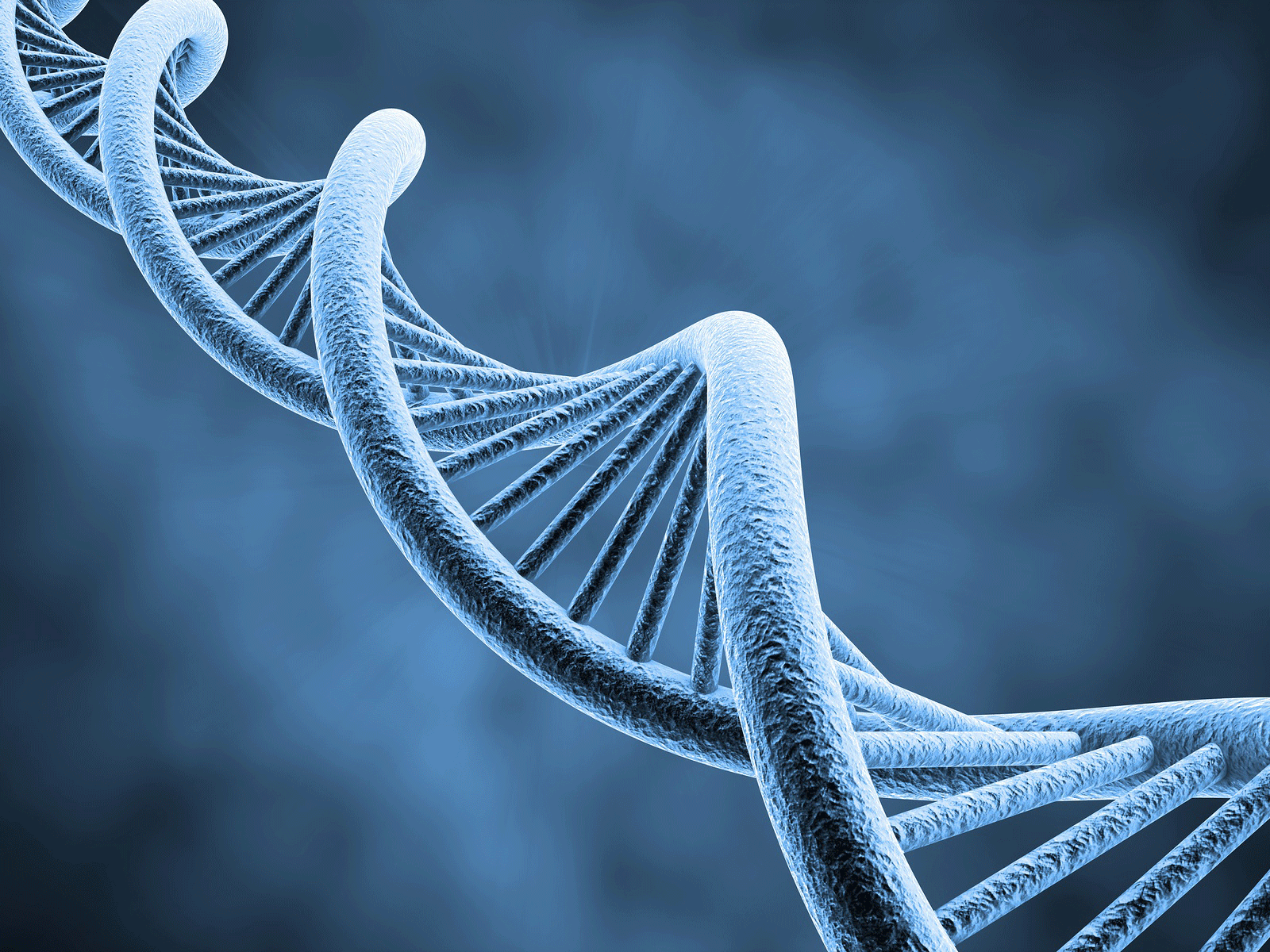Life At The Speed Of Light
Air Date: Week of March 7, 2014

The Milky Way (NASA)
J Craig Venter is one of the most dynamic figures in genome science. His latest book "Life at the Speed of Light" looks forward to the possibilities for food, medicine and energy, now that humans can create synthetic life and transmit its code across vast distances at the speed of light.
Transcript
CURWOOD: However life began, there’s no question that where it’s going is beyond the imagination of most of us. But that’s not the case with J. Craig Venter. Craig Venter has been able to literally synthesize life - first in the form of an RNA virus known as a bacteriophage, and then ultimately in the form of full strands of DNA that can reproduce an entire cell. He was one of the decoders of the human genome, but that groundbreaking achievement was merely the start. As Craig Venter contends in his recent book “Life at the Speed of Light”, the future is synthetic. He recalls how the first creation of life in the laboratory opened the door to this future.

Craig Venter (Wikipedia)
VENTER: We started with a small bacteriophage that kills E.coli, and we worked out how to make the synthetic DNA. It took us a couple of years to do that, but when we worked it out we were able to put that synthetic piece of DNA into E.coli, and the E.coli mechanism started reading the synthetic software, making proteins, and the proteins self assembled to form the virus that then killed the bacteria. So we actually describe this process, this situation where the software is building its own hardware. But no one had written large pieces of DNA before. So we had to work out whole new mechanisms for doing that.
CURWOOD: Educate me a bit here. When you talk about synthetic biology you use the term software and hardware. What exactly do you mean?
VENTER: So we consider DNA to be the software of life, much in the same way your computer software controls what your computer can do, only it’s even more so with life because the DNA software codes for the physical entity by making proteins and the proteins help form our cellular structures. So unlike a computer, our software actually leads to a physical structure from its code.
CURWOOD: How much do computers have to do with the work you are doing?
VENTER: Modern genomics would not be possible without modern high-end computing. A thesis of the book is now that the DNA code the As, Cs, Gs and Ts are becoming interchangable with the digital code that of the computer, and we can now go in both directions.
CURWOOD: So, tell me, what was the eureka moment for you when you were able for that first time to synthesize life in the form of this virus, this bacteriophage that could then affect E.coli bacteria?
VENTER: Well, the surprising thing to us was just how chemically made DNA was exactly like naturally occurring DNA in its ability to be read and transcribed. But that was sort of the starting point for this. The eureka moment came several years later in 2010 when we finally worked out how to synthesize a 1.1 million base pair genome. The virus was only 5,300 letters. And boot that up to get a self-replicating cell. The book describes all the trials and dead ends and pitfalls and frustrations and how even having a single letter wrong out of 1.1 million base pairs made the difference between life and no life. So it wasn’t a simple process, and having to work out the chemistry and well as having to work out the biology and how to transplant DNA. And so when we finally got that first beautiful little blue cell in 2010 indicating we had succeeded, it was after a lot of sweat and tears to be sure.
CURWOOD: What was the one innovation out of the many that you has that allowed you to do this? What’s the one thing that you point to yourself that made the critical difference?
VENTER: Well, there were two. One was on the chemical side of constantly improving our tools to synthesize accurate DNA code, but the big breakthrough came through the biological side of learning how to transplant genomes, and that not only laid the groundwork for being able to do this, but it told us a lot about how evolution occurred. And we see evidence for this in the microbes in the ocean and all life forms that instead of just being single genetic changes that led to new species evolving, in many cases it was adding thousands of traits at once by adding an entire new chromosome to a cell, and we were able to recapitulate that in the laboratory in a deliberate fashion. And so I think that was a key to not only understanding biology and life but enabling these next stages.
CURWOOD: What does this nature of life you have uncovered...what does that mean in terms what we might be able to do in terms of finding life elsewhere, well, in first our solar system, for example? Tell me about Mars.
VENTER: Well, the most interesting thing that I learned from my colleagues is we exchange about 100 kilograms of material each year between Earth and Mars. This is from meteor hits and things carried around, and also that Mars had oceans on probably at least two different occasions. And so it’s entirely possible that life on Earth came from Mars originally or vice-versa, but I think life will be ubiquitous in the universe. We find the same chemical basis everywhere we look. Amino acids and nucleic acids are formed sort of naturally, we find them in asteroids coming in. So I think it’s likely we will find it wherever we look in environments we know are compatible with life. The question is how do we get it back, how do we deal with it in the future. One of the proposals we have to use this interchange between the biological worlds and the digital worlds to send life at the speed of light, hence the title of book. And by sending a DNA sequencer to Mars, once we get down to these deeper layers, if there’s life there, we could just sequence the DNA of those microbes and send them back to Earth in as little as 4.3 minutes, and then recreate them using our synthetic genomic tools in a secure lab here.

The double helix strand of DNA (bigstockphoto.com)
CURWOOD: Wait a second. This sounds a little like teleporting.
VENTER: Well, we call it biological teleportation, but it’s not like a “beam me up, Scotty,” it’s sending the instructions or the information, in this case, the DNA software is sent as digital information and converted back into the chemical software, and we’re doing that now on Earth, but it’s not a huge leap to think about doing it between planets. And we’re trying to use that for even more important applications in terms of new ways to distribute vaccines that head off future pandemics.
CURWOOD: So you’re able to, in essence, sequence the genes of I guess, a single-celled organism at this point, you’re talking about, and then electronically send that sequence information to someplace else, and then the chemicals can be assembled to recreate that organism, without actually having the organism in the first place ever get to the destination.
VENTER: Exactly. That’s what we’re currently doing, and it’s even had a real world test with the outbreak of the H7N9 flu in China. Chinese scientists sequenced the flu virus associated with the outbreak and posted it on the internet. At the request of the US government, we downloaded that digital sequence and recreated the H7N9 flu to develop a vaccine and, for a long time, it was the only source that CDC, the US government, and our collaboration with Novartis had, and it didn’t entail sending an infectious agent through the mail, it was just downloading digital information.
CURWOOD: When would it be possible to sequence a single fertilized, say, human embryo at the single-cell stage, transit it electromagnetically with radiowaves, say to a nearby star and then have a human grow out there?
VENTER: Well, all except for the last part of the “human grow out there” is possible today. What happened when we first sequenced the human genome - all that has been digitized and spread around through the internet for almost 15 years now - but we don’t know how to make large pieces of DNA like the human genome. What we made was 1.1 million letters. The human genome is six billion letters and complex chromosome structures. So I think we’re a long way from the technology to rewrite the human genetic code.
CURWOOD: Where do you see your research in the world of synthetic biology being, say, in five or ten years from now?
VENTER: Well it’s moving at a much faster pace with various governments around the world investing very heavily in this. I’m hoping our own government will do the same, but one of the things that gives me great optimism is there’s tremendous effort with high school and college students where they naturally understand the exchange between the digital world that they grew up with and the biological world, and have come with numerous pretty amazing little inventions of creating the equivalent of electronic circuits out of biology, and I think this is going to be the future of a tremendous amount of design and probably inventions I can’t even envision right now myself. But we’re trying to drive the applications in some of the key areas in synthetic genomics towards new food production, new vaccines and that type of .. microbial production and potentially even fuel production from sunlight and CO2 in the future.
CURWOOD: By the way, when you mention food, what do you mean exactly?
VENTER: So, for example, we’re working with a number of naturally occurring, photosynthetic algae microbes that we’ve obtained from the ocean and in other places that we’ve encouraged some through selection and some through engineering to produce much higher amounts of, for example, the omega-3 fatty acids as major food supplements that are currently obtained primarily from large amounts of fish. It’s known as fish oil, when in fact, it’s algae oil that fish get by eating the algae. So we’re trying to eliminate the middle species and just go right to the algae for the source. But also, we can get much better sources of protein than we can from existing plants and animals in a much more productive fashion than trying to use cattle to produce steak, which each kilogram of steak requires 20,000 liters of water and a substantial amount of feed. So it’s clearly not sustainable, and we can get much better more nutritious proteins and oils by making them using algae cells for example.
CURWOOD: Craig Venter, your plate seems impossibly full. It seems like you’d have to live forever to follow all the channels that you’ve opened here.
VENTER: Well, we’re trying to take on projects where we can see results in my and my colleagues’ lifetimes, but we hope to have the science set off in a new direction that can hopefully help the survivability of our species long into the future.
CURWOOD: Craig Venter is the founder of J. Craig Venter Institute and his new book is called “Life at the Speed of Light: From the Double Helix to the Dawn of Digital Life”. Thanks so much for taking the time with me today.
VENTER: I enjoyed it. Thank you for your thoughtful questions.
Links
Living on Earth wants to hear from you!
Living on Earth
62 Calef Highway, Suite 212
Lee, NH 03861
Telephone: 617-287-4121
E-mail: comments@loe.org
Newsletter [Click here]
Donate to Living on Earth!
Living on Earth is an independent media program and relies entirely on contributions from listeners and institutions supporting public service. Please donate now to preserve an independent environmental voice.
NewsletterLiving on Earth offers a weekly delivery of the show's rundown to your mailbox. Sign up for our newsletter today!
 Sailors For The Sea: Be the change you want to sea.
Sailors For The Sea: Be the change you want to sea.
 The Grantham Foundation for the Protection of the Environment: Committed to protecting and improving the health of the global environment.
The Grantham Foundation for the Protection of the Environment: Committed to protecting and improving the health of the global environment.
 Contribute to Living on Earth and receive, as our gift to you, an archival print of one of Mark Seth Lender's extraordinary wildlife photographs. Follow the link to see Mark's current collection of photographs.
Contribute to Living on Earth and receive, as our gift to you, an archival print of one of Mark Seth Lender's extraordinary wildlife photographs. Follow the link to see Mark's current collection of photographs.
 Buy a signed copy of Mark Seth Lender's book Smeagull the Seagull & support Living on Earth
Buy a signed copy of Mark Seth Lender's book Smeagull the Seagull & support Living on Earth

